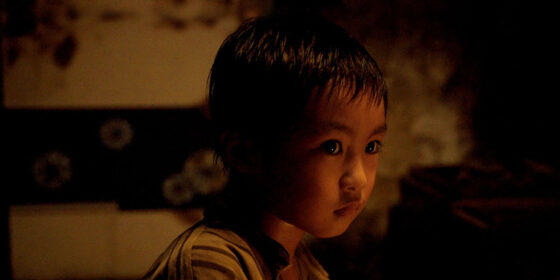TIFF 2023 | Shadow of Fire (Shinya Tsukamoto, Japan) — Centrepiece

By Josh Lewis
Since Fire on the Plains (2014) and Killing (2018), legendary Japanese cult filmmaker Shinya Tsukamoto—more commonly known for his grotesquely textured, sexually repressed science-fiction and horror films—has found himself obsessed with and lost in the tormented ruins of post-war Japan. Shadow of Fire specifically concerns itself with the innocence of a child (Oga Tsukao, only ever referred to in the film as “boy” or kid”) trying to navigate and work for basic needs like food, shelter, and family in the still-charred environment of a local ramen house turned brothel visited by traumatized WWII soldiers. Conceptually, the instinct would be to compare what Tsukamoto is doing here to Elem Klimov’s apocalyptic and nightmarish Come and See (1985), but in truth this is a much more optimistic and low-key affair, interested more in its overwhelming, disorienting handheld chamber setting and the possibility that the boy can be educated in order to escape it.
However, whether that be via his surrogate mother/prostitute (Shuri) who finds herself alone and sick—and who sees him as a potential replacement for her family killed in the war—or a revenge-driven soldier (Mirai Moriyama) who takes him on a mission that will show him the brutal capabilities and rippling consequences of a gun, there’s an ultimately strange lack of verve to Shadow of Fire. There’s nothing inherently wrong about a simple message stated simply, and Tsukamoto undeniably feels this one about how violence is a form of original sin that perverts, spreads, and haunts those who live in its aftermath in his bones or he wouldn’t be returning to it so frequently. But where Killing communicated in formally experimental images, like that of an Edo-period samurai sword shot with an intense shake that can barely contain its excitement to sever flesh, Shadow of Fire takes a much easier, more traditional war film approach of a cute kid being taught with fablelike obviousness.
Josh Lewis

